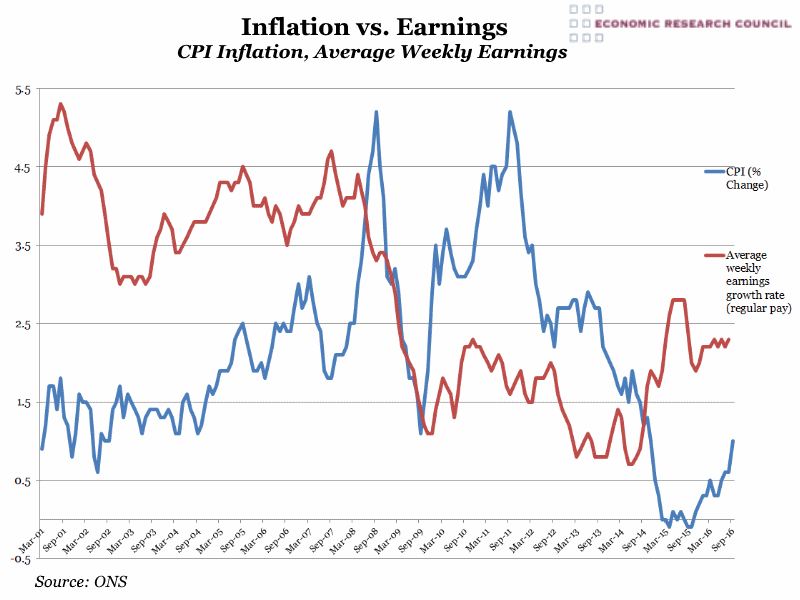Week 42, 2016: Inflation vs. Earnings
Summary: The latest ONS figures, released yesterday show that inflation seems to be in the initial phase of converging with wage growth, currently at a tolerable level. With wages also stable, the UK standard of living is unlikely to feel radically different. The Bank of England has a 2% inflation target, something which has eluded the UK economy since 2013. In itself yesterday’s confirmation of a rise to 1% is not too big an issue. Wage growth, although stable, has yet to return to pre-crisis levels
What does the chart show? The blue line shows the percentage change in CPI confirmed until September 2016. The red line shows the average weekly earnings growth rate not including pay affected by absence and bonuses.
Why is the chart interesting? Although wages appear to be rising, they are still in a recovery phase following the banking crisis, so households are far more exposed than before the crash. There is also clear evidence from the chart to illustrate that those who entered the job market in 2009 have seen very limited wage growth.
Perhaps the most topical aspect of the chart is the dramatic jump of 0.4% in inflation between August and September 2016. There has been much analysis of this in the press, where it has been deemed an omen of what is to come in the aftermath of Brexit. While the dramatic depreciation in sterling value has not yet had a chance to take effect on inflation, it is indeed likely to have a serious impact in the short to medium term future. We can expect to see further increases in inflation that will unlikely be matched by wage growth, should average wages remain fairly stagnant as demonstrated in the previous year. Standards of living will start to fall in very real terms should CPI inflation reach and surpass wage growth levels.
What has received less coverage is that the government have frozen all benefit rises until 2020. The government previously calculated the next financial year’s benefits payments based on the preceding September CPI rate of inflation. This means that lowest income households in the UK will likely experience an even more profound impact now this rise in the cost of living will not be reflected in welfare payments. With Inflation being generally regressive, this would affect not just the UK’s poorest, but those in work too.





 Thursday, October 20, 2016 at 5:29PM
Thursday, October 20, 2016 at 5:29PM